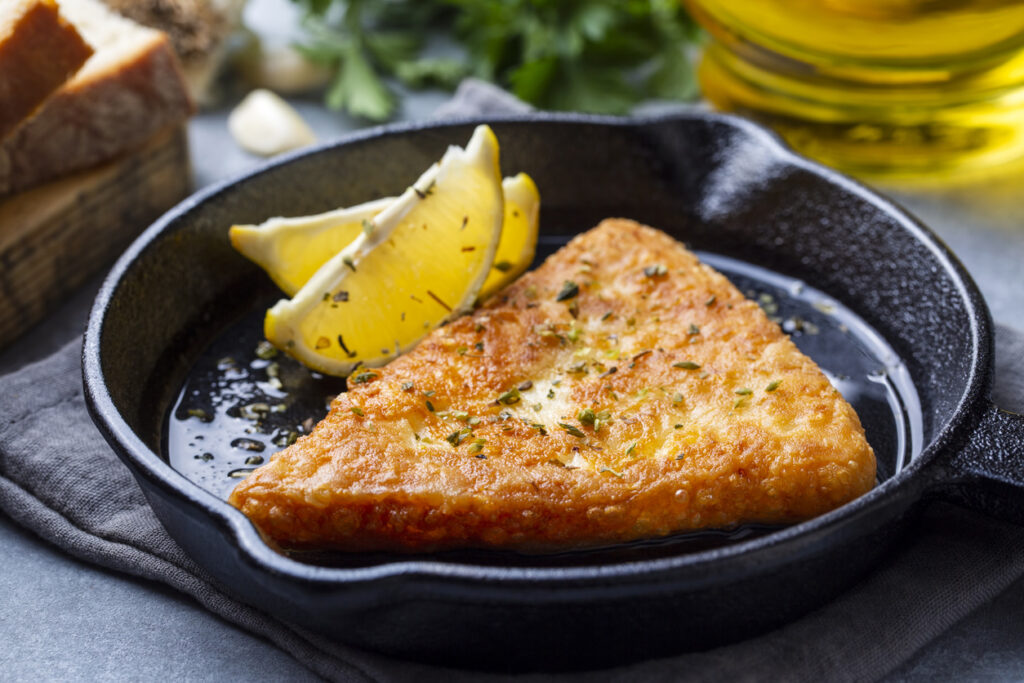The Cultural Tapestry of Greek Street Food
Greek street food, a vibrant tapestry woven with the threads of history, tradition and regional diversity, offers a palette of flavors that tells the story of Greece itself. From the ancient Olympic games to the bustling streets of modern Athens, the evolution of street food reflects the changes in Greek society over millennia. Yet, at its core, it remains a celebration of communal life, a testament to the Greek ethos of sharing joy and sustenance.
Loukoumades: A Divine Sweetness
Loukoumades, with their golden, crispy exterior and fluffy interior, are not just a treat, they are a bite of history. This dessert’s origins in the ancient Olympic games link it to a tradition of excellence and celebration. The modern enjoyment of loukoumades in bustling Athenian markets or quiet island corners echoes the communal festivities of ancient times. Drenched in honey and sprinkled with cinnamon and walnuts, each bite is a blend of textures and flavors that awaken the senses. Exploring further, one can find variations of loukoumades across Greece, with some regions adding a twist of local flavors, such as a sprinkle of sesame seeds or a drizzle of chocolate sauce. These modern adaptations showcase the innovative spirit of Greek cuisine, embracing tradition while exploring new culinary landscapes.

Photo by Kenfood
Koulouri: The Everyday Staple
The humble koulouri, with its sesame-studded crust and soft, chewy interior, is more than just a breakfast item, it is a symbol of Athenian life. Its simplicity belies its significance in the daily rituals of Greeks, serving as a quick, nutritious snack that fuels the bustling energy of the city. The sight of koulouria being sold from street carts and bakeries at dawn is a familiar scene, emblematic of the Greek morning. Digging into the origins of koulouri, one discovers its roots in Byzantine cuisine, highlighting the continuity of Greek culinary traditions through centuries. The sesame seeds that coat the koulouri are not only a source of flavor but also of nutritional value, making it a staple that has endured through time.

Photo by Tasteatlas
Spanakopita: The Savory Comfort
Spanakopita, with its flaky phyllo crust and rich spinach and feta filling, is a testament to the Greek mastery of combining simple ingredients to create deeply flavorful dishes. This savory pie, found in every corner of Greece, from street vendors to family tables, is a versatile dish that can serve as a snack, a side, or a meal on its own.The preparation of spanakopita varies from region to region, with some areas adding leeks, dill, or other herbs to the filling, each variation reflecting local tastes and traditions. The pie’s presence in Greek cuisine is a celebration of the agricultural bounty of the land, showcasing the importance of vegetables and dairy in the Greek diet.

Photo by Argiro
Saganaki: A Fiery Delight
Saganaki, the pan-fried cheese that dances in the pan before being served with a splash of lemon, is a dish that combines simplicity with indulgence. The choice of cheese, whether graviera, kefalograviera, or halloumi, speaks to the diversity of Greek cheese-making traditions. The act of frying transforms the cheese, creating a dish that is at once crispy, gooey and bursting with flavor. The name “saganaki” refers not just to the dish but also to the small frying pan in which it is made, highlighting the importance of technique in Greek cooking. Served in tavernas and street food stalls alike, saganaki is a dish that warms the soul, perfect for sharing with friends and family.

Photo by Diane Kochilas
Tyropita: The Heartwarming Pastry
Tyropita, or cheese pie, embodies the Greek love for pastry and cheese. The flaky layers of phyllo dough encase a rich, savory cheese filling, making for a snack that is both comforting and satisfying. Like spanakopita, tyropita is a reflection of regional culinary traditions, with variations in filling and pastry style across Greece. The cheese used in tyropita can range from the tangy feta to the creamy ricotta-like anthotyro, each lending its unique flavor profile to the pie. The versatility of tyropita makes it a beloved snack, enjoyed at any time of day, from a quick breakfast to a late-night bite.

Photo by Tasteatlas
Octopus and Calamari: Flavors of the Sea
In Greece, the sea is never far away and its bounty is celebrated in dishes like grilled octopus and fried calamari. These seafood delights, often served with a simple dressing of lemon and olive oil, capture the essence of the Mediterranean. The process of preparing octopus, tenderizing it before grilling it to perfection, is a culinary art that reflects the Greek respect for ingredients. Calamari, whether fried to crispy perfection or grilled, is a testament to the simplicity of Greek seafood cuisine. The freshness of the catch is paramount, with the cooking process designed to enhance, not mask, the natural flavors of the sea.

Photo by Fishme
Beyond the Classics: A World of Flavors
As we delve deeper into the streets and markets of Greece, we encounter a myriad of other dishes that enrich the tapestry of Greek street food. From the spicy and savory meatballs known as keftedes to the sweet and syrupy pastries like baklava, the variety is endless. Each dish, with its own story and tradition, invites us to explore further, to taste and learn, and to immerse ourselves in the rich culinary culture of Greece. The exploration of Greek street food, beyond the well-known icons of souvlaki and gyros, reveals a culinary landscape rich with history, diversity and flavor. It’s a journey through time, from ancient traditions to modern adaptations and through space, from the bustling streets of Athens to the serene islands of the Aegean. In every bite, there’s a story of Greece, a celebration of its land, its seas and its people.







